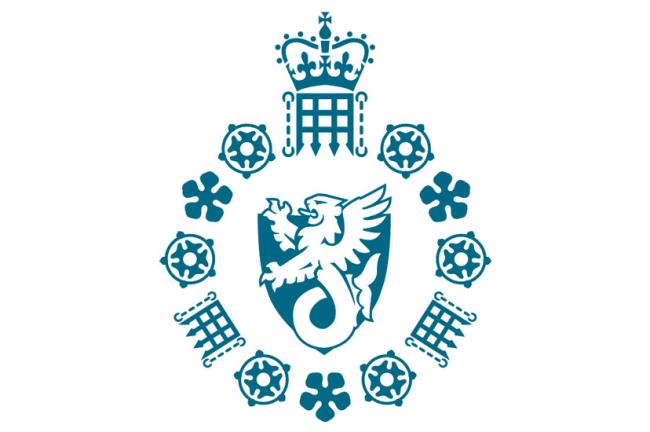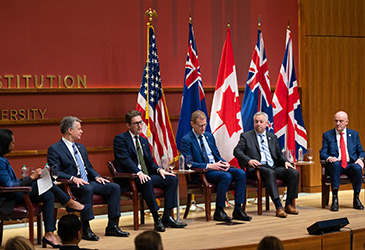
Hitler's last days
Looking at Hitler's last days
30 April 2015 marked the seventieth anniversary of the suicide of Adolf Hitler in his bunker below the Reich Chancellery in Berlin. Eyewitness accounts, collected by the Security Service following the end of the war, provide a fascinating insight into Hitler's final days in April 1945.
The hunt for Adolf Hitler
In June 1945, the Soviets announced - falsely - that Hitler's remains had not been found and that he was probably still alive.
This announcement caused a predictable flurry of "Hitler sightings" across Europe. Allied officers sought to establish beyond possible doubt that Hitler had indeed died in his bunker. To that end, they interrogated various members of Hitler's personal staff who had been with the dictator in late April 1945.
The historian Hugh Trevor-Roper, who served as a British military intelligence officer during the war, used these accounts to investigate the circumstances of Hitler's death and rebut claims that Hitler was still alive and living somewhere in the West. He published an account of his findings in 1947 in his book The Last Days of Hitler.
At the end of the Second World War various members of Hitler's personal staff, who had been with him in the bunker during April 1945, were interrogated by Allied officers seeking to establish beyond possible doubt that Hitler had died.
Their questioning concentrated on the events that took place in the Bunker during the last days of April. By then the Red Army had surrounded Berlin and the sound of shellfire could be heard clearly from within the Führerbunker.
Hitler's will and marriage
Hitler retreated to the bunker in January 1945 as the Russians advanced across Poland towards eastern Germany and the Allied airforces devastated Berlin with bombing raids. By the start of April 1945, 2.5 million Russian soldiers had reached the German capital. Two weeks later, they had reached the city centre and were fighting within only a few hundred yards of Hitler's refuge.
In the small hours of 28-29 April Hitler dictated his will, in the form of a political and personal testament, to Gertrud "Traudl" Junge, who was one of his secretaries. Soon afterwards Hitler and his mistress Eva Braun were married.
Accounts from two of the secretaries present recorded that they had been called together to see the newly married couple. Hitler and Eva emerged from the map-room where the marriage ceremony had taken place, accompanied by Goebbels, his wife Magda and Hitler's private secretary Martin Bormann. Turning to Hitler's personal secretary, Gerda Christian, Eva pointed to the wedding ring on her finger and received her congratulations.
A party followed to celebrate the occasion. According to Christian, Hitler talked mostly of the past and of happier times. However, he admitted to her that he knew the war was lost. He added that he would never allow himself to be taken prisoner by the Russians but intended to shoot himself. He confided to Junge that the wedding had been an emotional experience, but that for him death would only mean a personal redemption of his many worries and of what had been a very difficult life.
Christian, who was accustomed to joining Hitler and Eva for certain meals, was invited to the wedding breakfast after the ceremony but left early, telling Junge that she had been unable to stand the atmosphere of gloom and despondency.
Preparations for death
On the morning of 29 April the inhabitants of the bunker received news of the execution by Italian partisans of Mussolini and his mistress, Claretta Petacci. One of those interrogated commented that this would have served to reinforce Hitler's determination that neither he nor Eva Braun should face this fate.
Hitler ordered his staff to prepare for the end. An eyewitness noted that Hitler's SS bodyguards were destroying his personal papers. Elsewhere one of the doctors was instructed by Hitler to poison Blondi, his Alsatian dog, and Eva Braun's spaniel. The eyewitnesses also described how in the afternoon of 29 April Hitler went from room to room shaking hands with all but his immediate staff, saying a few words of encouragement and thanks to each.
By the morning of 30 April Russian forces had reached the nearby Potsdamer Platz and the sounds of battle were all around. One version on record suggests that Eva was overheard crying, "I would rather die here. I do not want to escape". She and Hitler later emerged from their suite, their personal staff having been assembled, and went round the room shaking hands silently. Everyone knew that the time had come.
Junge recalled that she and Christian both asked Hitler for a poison capsule, having noted the rapid effect that the poison had had on Hitler's dog. Hitler gave them one each, saying as he did so that he was sorry he had no better parting gift and that he wished his generals had been as poised and brave as they were. Eva embraced Junge and, in what seems to have been her last recorded words said, "Take my fur coat as a memory. I always like well-dressed women". Then, saying "It is finished, goodbye", Hitler took Eva back into their rooms for the last time. During the afternoon Hitler shot himself and Eva took the poison capsule that he had given her.
Disposal of the bodies
Soon afterwards their bodies were carried up the stairs to a small garden outside the door to the bunker complex. Hitler's driver, another of those interrogated, helped carry Eva's body some of the way and noted that once there it was placed on the ground beside Hitler's. He told his interrogators he had noticed that she had been wearing a blue summer dress made of real silk, that her shoes had cork heels, and that her hair was "artificially blonde".
Moments later the same witness saw a party including Goebbels and Bormann gathered beside the bodies. One of them poured petrol from a can over the bodies. They then retired to the safety of a doorway with the sound of Russian artillery all around them. Hitler's adjutant lit a petrol-soaked rag and threw it on the bodies, which immediately burst into flames. The group made the Hitlergruss (the Nazi salute) and withdrew.
One of the bunker guards arrived late on the scene. He described how he was greatly startled to see the two bodies burst into flames as if by spontaneous combustion. He had been unable to see the Goebbels party concealed in a doorway and only later was told the true circumstances.
The bodies were only partly destroyed by the fire and were later hastily buried in a shallow bomb crater. According to Russian reports, the bodies were exhumed by Soviet troops and taken to Magdeburg in East Germany where Hitler's body was said to have been finally destroyed in April 1970 by the KGB. Two fragments of the body, a jawbone and skull, were preserved. They were displayed in an exhibition at the Russian Federal Archives in Moscow in April 2000.
Hitler's final days in the Berlin bunker have been portrayed in several films, most recently Oliver Hirschbiegel's 2004 film Der Untergang ("Downfall").

